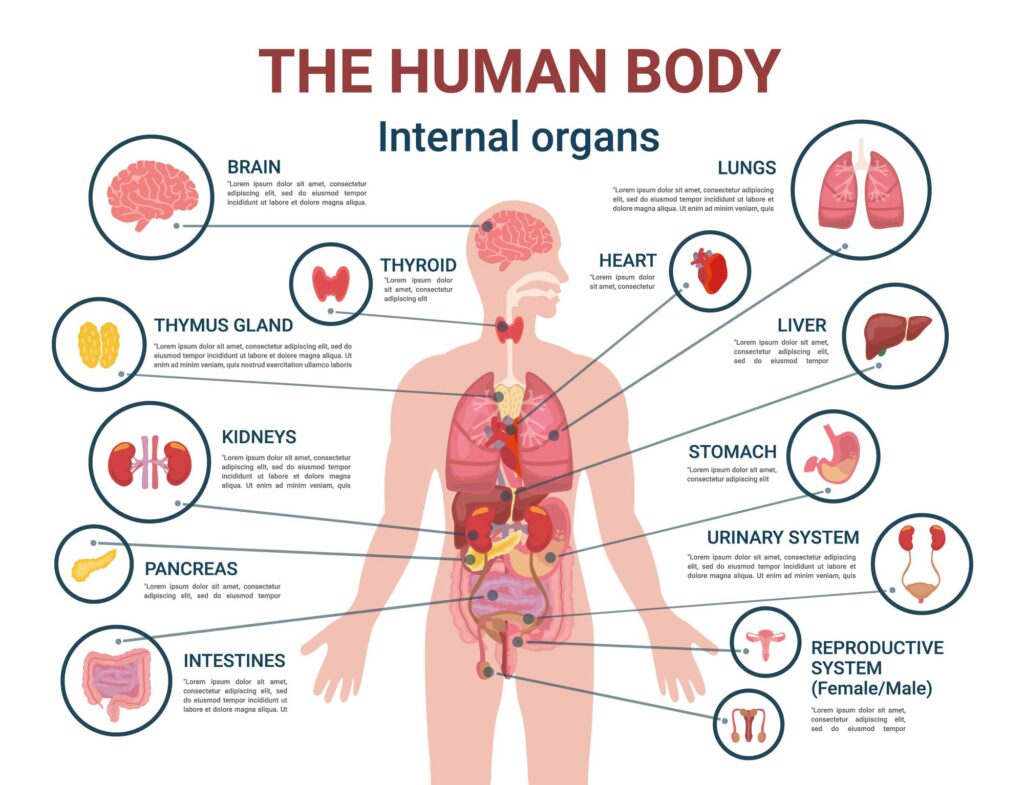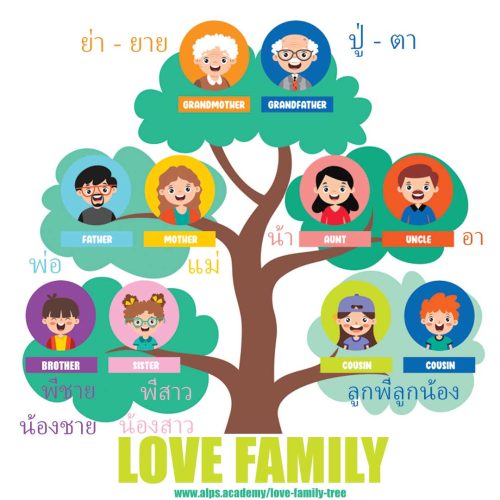Human Body Parts Diagram and Vocabulary in English and Thai
Home > English vocab > body parts
Body Parts Diagram (with Labels)

Learning the name of each part of the body is an important step in understanding English and human anatomy.
This page uses clear diagrams and easy words to help you discover the main parts of the body, both outside and inside. Whether you are studying English or biology, these simple explanations and pictures will help you connect new words to real body parts with confidence.
Body Diagram Parts
- hair ผม
- eyebrow คิ้ว
- eye ตา
- nose จมูก
- lips ริมฝีปาก
- mouth ปาก
- throat คอ
- arm แขน
- chest หน้าอก
- fingers นิ้วมือ
- waist เอว
- knee หัวเข่า
- foot เท้า
- head หัว
- forehead หน้าผาก
- ear หู
- tooth ฟัน
- cheek แก้ม
- tongue ลิ้น
- chin คาง
- shoulder ไหล่
- elbow ข้อศอก
- hand มือ
- stomach ท้อง
- hips สะโพก
- leg ขา
- ankle ข้อเท้า
- toes นิ้วเท้า
Other Human Body Anatomy
- abdomen หน้าท้อง
- beard หนวดเครา
- bellybutton ปุ่มท้อง
- bottom (bum) ก้น
- calf / calves ขาท่อนล่าง
- chin คาง
- eyelashes ขนตา
- face ใบหน้า
- forearm แขนท่อนล่าง
- jaw กราม
- mustache หนวด
- nails เล็บมือ
- thigh ต้นขา
- upper arm ต้นแขน
Organ System in English

Why not try other English vocabulary with Thai or Chinese terms to help understand a diagram. Here is a page for the family tree.
FAQ: Human Body Parts
What is human anatomy?
Human anatomy is the scientific study of the structure of the human body, including its organs, bones, muscles, and systems
What are the main parts of the human body shown in a body diagram?
A typical body diagram highlights key parts such as the head, neck, trunk (torso), arms, and legs. It may also label internal organs and major bones, sometimes with translations for language learners, such as English and Thai.
What is the function of the skeletal system?
The skeletal system provides structure, support, and protection for the body’s organs. It also enables movement by connecting with muscles and serves as a reservoir for minerals like calcium
Which organs are included in human body anatomy diagrams?
Common organs shown include the brain, heart, lungs, liver, kidneys, bladder, pancreas, small intestine, and large intestine. These organs belong to different systems such as the digestive, urinary, and endocrine systems.
What is the muscular system and its function?
The muscular system consists of muscles that allow movement, maintain posture, and help circulate blood throughout the body. Muscles connect to bones and work with the nervous system to produce motion.
How does the nervous system work throughout the body?
The nervous system, including the brain, spinal cord, and nerves, controls sensory input, movement, and functions of organs by transmitting electrical signals throughout the body
What is the role of the respiratory system?
The respiratory system, including the lungs and airways, brings oxygen into the body and removes carbon dioxide. It works closely with the circulatory system to deliver oxygen to tissues and remove waste gases.
What is the digestive system and its organs?
The digestive system breaks down food to absorb nutrients and expel waste. Key organs include the mouth, esophagus, stomach, small intestine, large intestine, liver, and pancreas.
What is the function of the kidneys and bladder?
The kidneys filter blood to remove waste, forming urine, which is stored in the bladder before being expelled from the body.
What is the endocrine system?
The endocrine system is made up of glands (like the pancreas) that produce hormones to regulate metabolism, growth, and other functions.
What is the reproductive system?
The reproductive system includes organs involved in producing offspring, such as the ovaries and uterus in females, and testes in males.
What is the integumentary system?
The integumentary system consists of the skin, hair, and nails, protecting the body from external damage and helping regulate temperature.
How do blood vessels and the heart function in the body?
Blood vessels (arteries, veins, and capillaries) and the heart form the circulatory system, which pumps blood, delivers oxygen and nutrients, and removes waste products.
What is a vector illustration in anatomy?
A vector illustration is a digital drawing that shows body anatomy or body organs in a clear, scalable format, often used for educational diagrams and schemes.
How do anatomy and physiology differ?
Anatomy focuses on the structure of body parts, while physiology studies their function and how they work together in systems like the muscular, skeletal, and nervous systems
What is the importance of body diagrams for English language learners in Thailand?
Body diagrams with both English and Thai labels help learners connect anatomical terms in both languages, making it easier to study biology and human anatomy.


